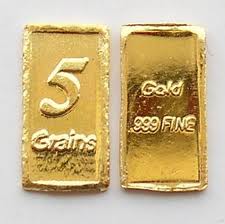The Problem with the Gold Standard

In today’s excerpt – the gold standard. In recent political debates, there have been calls for a return to the gold standard. This standard states that holders of paper money can redeem it for gold, and banks – especially the U.S. Federal Reserve Bank – are required to match a certain fixed percentage of its currency in circulation with gold held in reserve to meet that redemption obligation. The gold standard was in effect when the U.S. Federal Reserve was chartered in 1913, but has been abandoned since that time. The most important effect of a gold standard is to prevent the government from printing extra money and thus devaluing all currency and bringing inflation. This goal – preventing government profligacy – is why certain politicians (most recently Ron Paul and the Tea Party members), continue to call for a return to the gold standard.
The gold standard, however, is not without problems. Gold is an artificial yardstick, and the actual total amounts of gold worldwide are small and thus subject to manipulation. The Spanish discovery of vast amounts of gold in the New World after Columbus caused rampant inflation in Spain. Conversely, long periods without new discoveries of gold (such as the mid-to-late 1800s) caused deflation, bringing inordinate hardship to the American farmers of the time.
In any event, the period immediately before World War I found the gold standard at its zenith in the Western world, so much so that most economists of the time – including John Maynard Keynes himself — predicted that the war would not last longer than a year because the governments would run out of gold to pay for war. Keynes was shown to be disastrously wrong when all governments promptly abandoned the gold standard and easily paid for a prolonged war by printing two to four times the amount of paper currency that had been in circulation before the war. This caused rampant inflation and helped sow the seeds of despair that led to a second massive war – World War II:
[In 1914], all major currencies were on the gold standard, which tied a currency in value to a very specific quantity of gold. The pound sterling, for example, was defined as equivalent to 113 grains of pure gold, a grain being a unit of weight notionally equal to that of a typical grain taken from the middle of an ear of wheat. Similarly, the dollar was defined as 23.22 grains of gold of similar fineness. Since all currencies were fixed against gold, a corollary was that they were all fixed against one another. … All paper money was legally obligated to be freely convertible into its gold equivalent, and each of the major central banks stood ready to exchange gold bullion for any amount of their own currencies. The following excerpt on this subject is from Liaquat Ahamed’s brilliant book Lords of Finance.
“Gold had been used as a form of currency for millennia. … Most of the monetary gold in the world, almost two-thirds, did not circulate but lay buried deep underground, stacked up in the form of ingots in the vaults of banks. In each country, though every bank held some bullion, the bulk of the nation’s gold was concentrated in the vaults of the central bank. This hidden treasure provided the reserves for the banking system, determined the supply of money and credit within the economy, and served as the anchor for the gold standard.
“While central banks had been granted the right to issue currency—in effect to print money—in order to ensure that that privilege was not abused, each one of them was required by law to maintain a certain quantity of bullion as backing for its paper money. These regulations varied from country to country. … The Federal Reserve (the Fed) was required to have 40 percent of all the currency it issued on hand in gold. … The effect was to tie the amount of each currency automatically and almost mechanically to its central banks’ gold reserves. …
“Because [of this] governments had to live within their means, and when strapped for cash, could not manipulate the value of the currency. Inflation therefore remained low. Joining the gold standard became a ‘badge of honor,’ a signal that each subscribing government had pledged itself to a stable currency and orthodox financial policies. By 1914, fifty-nine countries had bound their currencies to gold.
“Few people realized how fragile a system this was, built as it was on so narrow a base. The totality of gold ever mined in the whole world since the dawn of time was barely enough to fill a modest two-story town house. Moreover, new supplies were neither stable nor predictable, coming as they did in fits and starts and only by sheer coincidence arriving in sufficient quantities to meet the needs of the world economy. As a result, during periods when new gold finds were lean, such as between the California and Australian gold rushes of the 1850s and the discoveries in South Africa in the 1890s, prices of commodities fell across the world.”
Author: Liaquat AhamedTitle: Lords of FinancePublisher: PenguinDate: Copyright 2009 by Liaquat AhamedPages: 11-13





